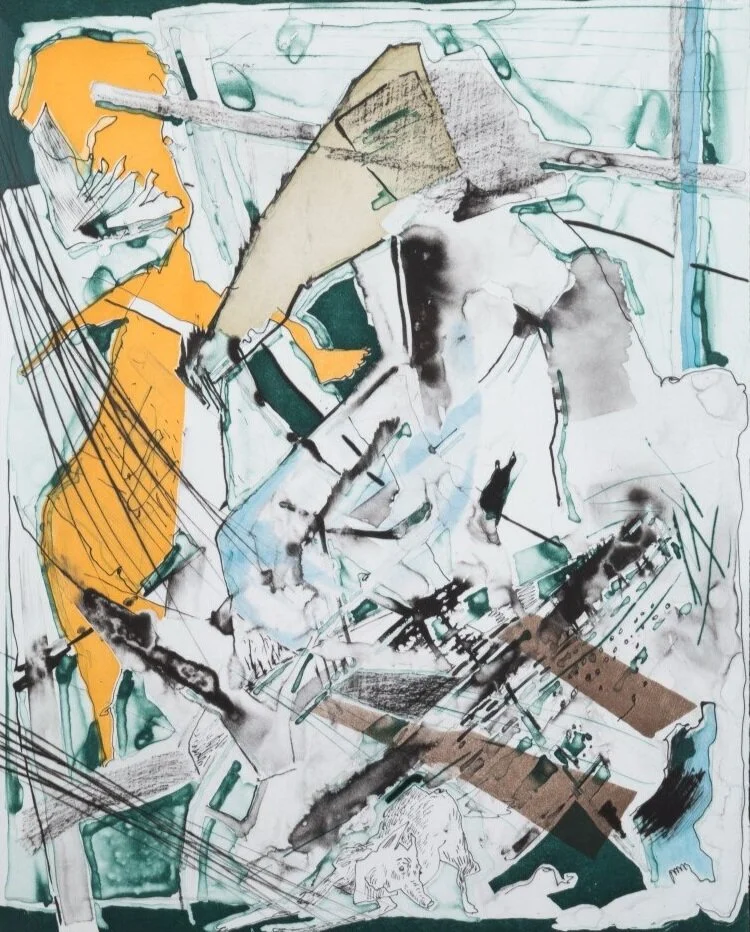Staff's Choice: "Signs" by Robert Rauschenberg
/Robert Rauschenberg, Signs, 1970, Screen-print, 2/250.
I was born 30 days before Neil Armstrong walked on the moon, and everything and everyone in this screen-print by Robert Rauschenberg either lived or occurred before my time. And yet the events and personalities depicted still have a major impact on our world and culture over fifty years later. Among my many roles at the Museum, after hours I also teach photography. As my students get a little more advanced and are no longer overwhelmed by the camera, I try to emphasize storytelling in their photographs. A good photograph should tell a story. A great photograph tells multiple stories. Many of my students are content just to make a beautiful image, but I try to push them to go beyond that whenever possible.
In Signs, Rauschenberg has created a work that many would not call beautiful because of the subject matter. The body of Dr. Martin Luther King, Jr. lying in repose with an African American male covered in blood just above is certainly not attractive — but upon closer examination, it creates a powerful story by itself. Is the man covered in blood wounded? Has he been shot or stabbed or is it someone else’s blood upon him and he is being arrested? The expression on his face appears hopeless. But look where Rauschenberg places the bleeding man’s hand. It is on Dr. King, as if reaching out for him. This is storytelling through placement of objects in a composition.
Two major faces included in the collage are President John F. Kennedy and, above him, his brother Robert F. Kennedy, both icons of the 60s and both, like Dr. King, assassinated in their primes. In the far right bottom corner are two frames from the video taken the day of President Kennedy’s assassination, most easily identified by our spotting First Lady Jackie Kennedy’s pink outfit. Rauschenberg places these images next to Dr. King and the presumably-shot African-American man, a deliberate choice that tells a story in its own right.
When I first saw this artwork, the phrase “cult of personality” jumped in my head. Just as the Kennedys dominated politics during the 60s, Janice Joplin helped define music and pop culture in the 60s; likewise, Dr. King’s role in shaping America as we know it today will live on forever. At first I mistakenly assigned Neil Armstrong — a reluctant celebrity — to the cult of personality camp, but then I read the definition again. Cult of personality is when a person or people use propaganda, the arts, or media effectively to create idealized versions of themselves, often using patriotism or heroism to achieve their goals. It occurred to me that all the astronauts who rose to fame in the 60s enhanced other people’s cults of personality; the astronauts’ heroism and patriotism in turn furthered the images of their national leaders. A Naval Pilot to his core, Armstrong fell in line as a good soldier and did his duty even though he never wanted the spotlight for himself.
Throughout history soldiers of all types have been used as propaganda. In Signs, the soldiers are just there. Rauschenberg does not seem to pass judgment on them one way or the other. The astronauts seem to be neither positive nor negative “signs,” but the viewer may place them into one camp or the other depending on if he or she lived through the Vietnam War. Here the story changes depending on who is viewing the artwork.
There are many other stories this artwork has to share, and, by my definition, that makes this work a truly great work of art. I will leave it to you to explore the work more on your own, to find more stories, and to ask more questions like: What are the two groups of soldiers doing? Are they the same soldiers? Are those students protesting? Or are they celebrating? Is that a Roy Lichtenstein artwork in the far right center under everything else? What is the circular lens shape in the upper right? There are many other signs here to look at. What do you see?
-Gregory Mills, Director of Security, Technology & Photography

